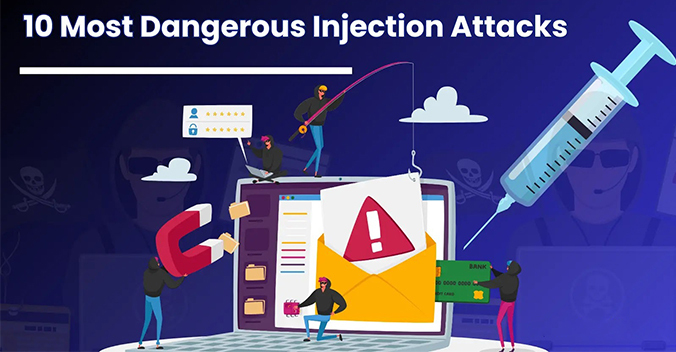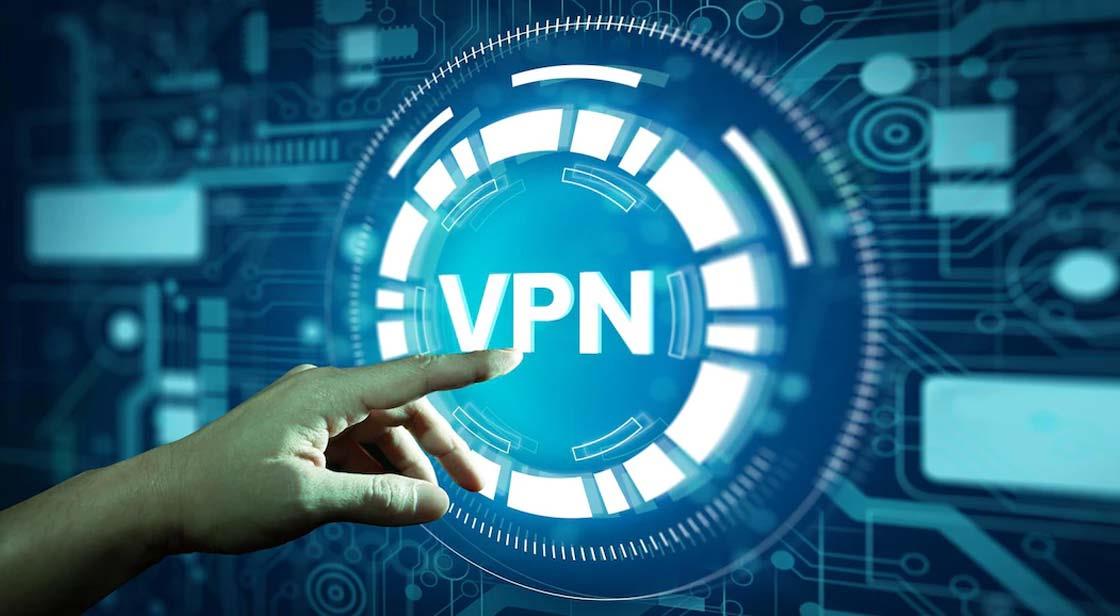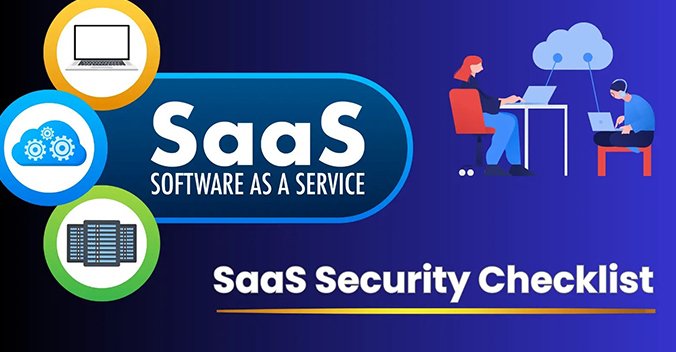Being in any industry, particularly in the network and admin team, means that you need to be aware of certain vulnerabilities, including injection attacks, to protect your device(s) from them. Every cyberattack or vulnerability has a unique technique, however, injection-type cyberattacks are the most common. You need to be aware of them to understand it and take appropriate precautions.
This type of cyberattack method can be described as an “Injection” cyberattack. Similar to how an injection transports liquid medication throughout the body, these hackers provide content to obtain data. The primary source of this injection is malevolent adversaries who want to see you suffer a big loss in your company. The hacker can enter many program types using injection attacks.
These inputs are explained, causing the device’s processor to treat them as commands and carry them out. As a result, it produces an incorrect outcome. Following this, a data crash will occur, giving a hacker access to your company’s sensitive information. Since injection attacks are the oldest, a majority of hackers employ them. A major issue is injection attacks, which rank as the first vulnerability application. There are good explanations for it. Cyberattacks by injection are exceedingly risky.
An Injection Attack: What Exactly Is It?
A security flaw known as an “injection attack” makes it possible for a hacker to introduce his malicious commands/code into your program or system. This exploit uses your sloppy handling or a lack of validation to alter your program's behavior or gain unauthorized access to data. It can occur in many different contexts, including web applications, databases, network protocols, and command-line interfaces.
The Causes of an Injection Attack
injection attacks often happen due to a weakness in a system's or application's handling of untrusted data and by insufficient input validation. The door is left open for malicious commands or characters to enter the system when user input is not thoroughly examined.
In case the input is not verified & sanitized, the system can execute malicious code/commands injected by the hacker. Furthermore, faulty data handling might give hackers access to the intended behavior of the system.
Absent or lax security mechanisms, such as insufficient input filtering, loose access controls, or ineffective encryption methods, increase the likelihood of injection attacks.
List of Top 10 Injection Attacks in 2024
The overall trend among threat actors now is relying on older techniques but spending more money and deploying them differently to achieve greater success. With that said (because it can’t be overstated), here are the top ten injection attacks that are emerging in 2024.
1. Code Injection
It's a cyberattack where the hacker knows your database operating system, programming language, web application, etc. Then it will be easier to inject the code through text input and force it to the webserver. Users can submit anything they want in this injection attack, making the app potentially vulnerable. The server will allow the hackers to enter any input they want. Finding injection code vulnerabilities is simple; all you have to do is provide the hacker with different things before they insert it into the same web application.
2. SQL Injection
SQL is largely used by the query operations in this text input field, which uses SQL Scripts. It needs to visit the application as it will work directly with the database. To access the sensitive data stored in the database, the hacker need to successfully navigate the login screen. As PHP & ASP applications are older, there are greater chances of an SQL injection attack. Although ASP.Net & J2EE are more resistant to cyberattacks, they still have a vulnerability that prevents cyberattacks when SQL is injected.
3. Command Injection
The “Command Injection” is expected if you don't provide enough validation. Here, the hackers use a command rather than a programming code/script to access the system. Even though they may not be familiar with programming, hackers can identify the server's operating system.
A few systems have been added where the operating system runs programs and allows the web content to be exposed by randomly located files on the server. In comparison to other views, this displays the directory structure for changing the user password. Sysadmin can lessen these kinds of cyberattacks, but they also need to restrict the system's access level so that web applications cannot operate the server.
4. Cross-Site Scripting
The output will be created automatically without encoding or verifying whenever anything is added. This presents an opportunity for the hacker to deliver the malicious code to a different end-user. Hackers use this application's vulnerability to inject malicious JavaScript into a reliable website. Ultimately, it will allow the hacker to use the website as a target.
The malicious script is started by the victim’s browser without giving any notification. Cookies, sensitive data, session tokens, and other items are accessible through the browser. XSS cyberattacks are often separated into two groups: reflected and stored.
Malicious scripts installed in-store use visitor logs or message boards to continuously cyberattack the website. The browser request from the message forum is likewise received by the victim. When XSS is reflected, the malicious party responds by sending the input to the server.
5. XPath Injection
The user's interaction with XPath Query for XML data is the primary cause of this kind of injection. This cyberattack targets your access data by sending malicious information, just like SQL injection does. XPath is the standard language, as everyone is aware.
Therefore, it provides the attributes wherever you find them. It has an XML data query, and other web apps that set the data should also match. That time pattern will change to operation when you get faulty input, allowing the hacker to use the data.
6. Mail Command Injection
IAMP or SMTP statements are used in this application, incorrectly validating the user's input. The majority of web servers are vulnerable, and these 2 won't have robust defenses against cyberattacks. Hackers have avoided limitations on captchas and limiting request quantities by entering through the mail. To send messages and inject commands, they need a functional email account. These injections can typically be carried out on the webmail program, which can use the message-reading feature.
7. CRLF Injection
A line feed combined with a carriage return is the ideal CRLF configuration. This online form illustrates the cyberattack technique. It supports numerous widely used internet protocols, including MIME, NNTP, and HTTP. This cyberattack typically relies on a web application that is susceptible and fails to properly filter content from the user's point of view. The vulnerability here aids in opening the web application that isn't properly screening.
8. Host Header Injection
Numerous websites or applications on this server require the resident's website or web application identification. Each person has a virtual host that handles incoming requests. In this case, the request can be sent by the virtual host acting as the server.
The first virtual host is typically passed if the server receives an invalid host header at that point. A hacker might send arbitrary host headers by using this vulnerability. Is there a direct connection between host header modification and PHP applications via other web development technologies?
Host header cyberattacks function similarly to other cyberattack types, such as web cache poisoning, and their implications also include various forms of hacker execution, such as the ability to reset passwords.
9. LDAP Injection
The “LDAP Injection” is the best protocol design that is enabled by another network is LDAP Injection. This intranet is quite helpful as it allows you to use a single sign-on system and saves your password & username. The special control character is involved in this LDAP query, which influences its control.
The hacker can alter the LDAP's intended behavior, giving them power over the character. It may also have several underlying issues that enable the incorrectly validated LDAP injection attack. The application receives a text input from the text user that contains an LDAP query; it is not cleaned up.
10. XXE Injection
The XXE injection creates a vulnerability in the XML external entity compilation (XXE). It uses the support by giving DTDs shoddy XML parser security. Hackers can quickly execute a variety of cyberattacks involving Remote Code Execution, such as route traversal and SSRF, by using well-created XML documents.
Its legacy is inherently risky, and, unlike the other 4 cyberattacks, it has not taken use of unvalidated user input. The only way of preventing the vulnerability that prevents DTD's support is to process the application as XML documents.
The Final Conclusion
All cyberattacks are directed directly at the server and anything connected with open access to the internet, as we have said in the post. You need to keep your system and all the software up to date with the latest releases from your software manufacturers to prevent these cyberattacks.




